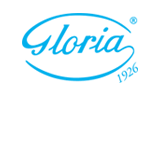Plasma 24-hydroxycholesterol is associated with narrower common carotid artery and greater flow velocities in relapsing multiple sclerosis

All claims expressed in this article are solely those of the authors and do not necessarily represent those of their affiliated organizations, or those of the publisher, the editors and the reviewers. Any product that may be evaluated in this article or claim that may be made by its manufacturer is not guaranteed or endorsed by the publisher.
Authors
Background: Multiple sclerosis (MS) studies suggest greater cardiovascular disease burden and disturbances in the cholesterol pathways1,2 The potential impact of oxidized cholesterol molecules (oxysterols) on MS is emerging (Figure 1).3
Objective: To determine the relationship between multiple oxysterol molecules and atherosclerosis burden in MS patients.
Materials and methods: A total of 99 MS patients (61 relapsing-remitting MS (RRMS) and 38 progressive MS (PMS)) patients and 38 healthy controls (HCs) underwent magnetic resonance angiography (MRA) and the cross-sectional area (CSA) of the common carotid artery (CCA) was determined at three different levels before the bifurcation (C7, C6 and C5). Additionally, an echo-color Doppler ultrasound was performed and measures of blood flow velocities were derived. Blood samples acquired at the time of the imaging examinations were analyzed and 24-, 25-, 27-hydroxycholesterol (24HC, 25HC, 27HC) and 7-ketocholesterol (7KC) were quantified in ng/mL.
Results: In the MS patients, higher levels of 24HC were significantly associated with smaller CCA CSA measured at all three cervical levels (r=-0.201, p=0.046; r=-0.228, p=0.023, and r=-0.215, p=0.032, for C7, C6 and C5, respectively). These associations were driven by the RRMS group only (r=-0.407, p=0.002 for C7; r=-0.414, p=0.002, for C6; and r=-0.368, p=0.006 for C5). No associations were seen in the HCs. Despite adjusting for the significant age effect (B=0.445, p=0.004), higher 24HC levels were independently associated with smaller CCA CSA (B=-0.20, p=0.045). 24HC was additionally associated with greater time-averaged and peak diastolic CCA velocities. RRMS patients treated with potent anti-inflammatory therapies had lower oxysterol levels (p=0.019). RRMS patients in the lower 24HC quartiles had significantly higher expanded disability status scale (EDSS) scores when compared to RRMS patients in the higher two 24HC quartiles (2.5 (IQR 1.9-3.1) vs 2.0 (1.5-2.5), p=0.038).
Conclusions: Greater 24HC levels are associated with smaller CSA CCA and greater flow velocities in RRMS patients. The higher inflammatory activity in RRMS patients may contribute to the production of highly reactive oxysterols and worsen the atherosclerotic burden in the MS population. Potent anti-inflammatory medications can significantly decrease oxysterol levels.
2. McComb M, Parambi R, Browne RW, et al. Apolipoproteins AI and E are associated with neuroaxonal injury to gray matter in multiple sclerosis. Mult Scler Relat Disord 2020;45:102389.
3. Fellows Maxwell K, Bhattacharya S, Bodziak ML, et al. Oxysterols and apolipoproteins in multiple sclerosis: a 5 year follow-up study. J Lipid Res 2019;60:1190-1198.
How to Cite

This work is licensed under a Creative Commons Attribution-NonCommercial 4.0 International License.
PAGEPress has chosen to apply the Creative Commons Attribution NonCommercial 4.0 International License (CC BY-NC 4.0) to all manuscripts to be published.

 https://doi.org/10.4081/vl.2022.10965
https://doi.org/10.4081/vl.2022.10965





